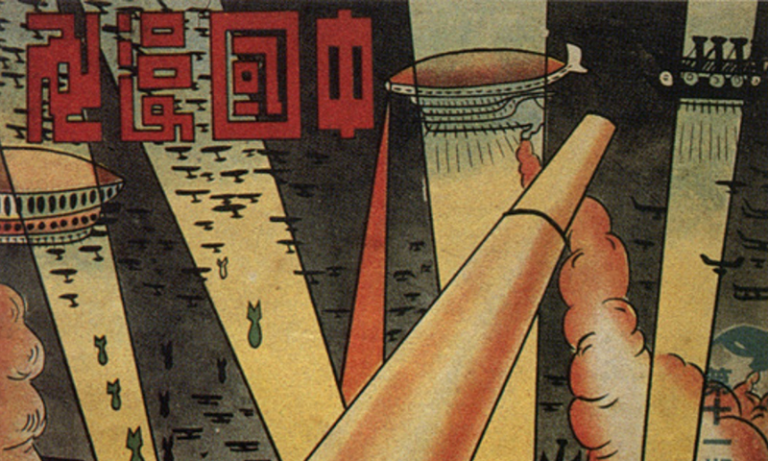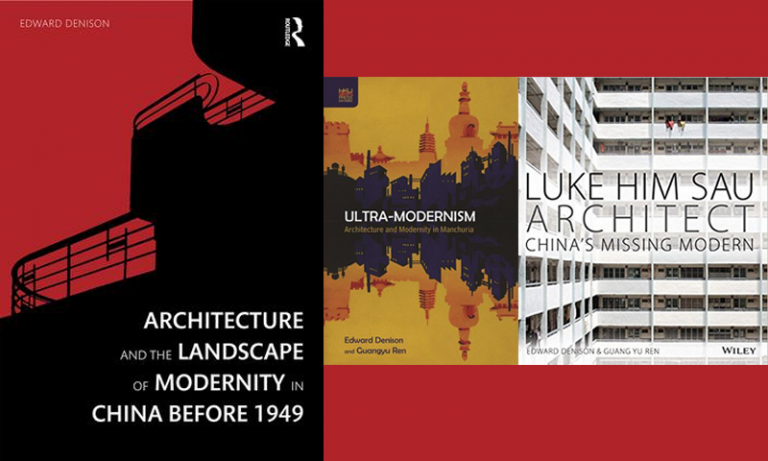Grappling with Chinese architectural modernity
5 December 2017
Edward Denison reflects on the remarkable fruition of his doctoral research – in three books

Last week, almost exactly eleven years to the day since receiving my letter of acceptance to join the Bartlett’s PhD programme, I had the honour of launching a book that was, I suppose, my PhD thesis. With the benefit of over a decade’s hindsight, I can see what a privilege and opportunity the PhD was, though I appreciate it is far from obvious when you are in the midst of it! Only when looking back can you start to see and appreciate the different avenues and opportunities that have been opened up and explored – all because of those first tentative forays into the unknown during the PhD.
I was fortunate that my early fieldwork entailed a year in China that afforded me the time and space to write a book based on the research I was able to complete in my first year and a half. When I returned to The Bartlett and re-engaged in the PhD programme I knew I had to dismantle this work and reconstruct it within a more rigorous intellectual and theoretical framework. This has been a process of learning and discovery that has underpinned my subsequent role as a Teaching Fellow and Lecturer at The Bartlett School of Architecture since 2010. I owe everything that I now do at The Bartlett to my exposure to different methodologies in history and theory learned during my PhD, and, of course, to the wisdom of my supervisor, Prof Adrian Forty, and the solidarity of Guang Yu Ren.
One thing you soon realise after completing you PhD is that it never really leaves you. Those sections or chapters that you had wished could have been larger or more thoroughly researched become the seeds of new ideas and new explorations. My thesis has since spawned at least two books – one from a chapter and one about a leading character in the research. That character was Luke Him Sau, a Chinese architect that studied at the AA from 1927-30 and was hired by I. M. Pei’s father as the first Director of the Bank of China’s Architecture Department. Luke Him Sau: China’s Missing Modern (Wiley, 2014) explores the subject’s life and career, placing him among the group of architects that had been written out of Chinese history because he did not stay after the Communist victory in 1949.
The other book covers the extraordinary landscape of northeast China formerly known as Manchuria, where Japan set about building an empire before the Second World War, embarking on some of the most ambitious urban plans on earth at that time. Ultra-Modernism: Architecture and Modernity in Manchuria (HKUP, 2017) charts this story and was the winner of the RIBA President’s Medal for Research in 2017.

Having explored these and other avenues through subsequent publications, it was time to return to the original thesis and get it published. I have always felt strongly that after four years of study, the results should be made available to a public audience and not confined to a single library shelf. By challenging conventional modernist historiography that has marginalised the experiences of the west’s other for much of the last century, the PhD and the book propose different ways of grappling with and comprehending the distinction and complexity of China’s experiences and its encounter with architectural modernity. I am hoping the book, which shares virtually the same rather unattractive academic title as the thesis, Architecture and the Landscape of Modernity in China before 1949 (Routledge, 2017), will draw a line under all my previous research and allow me to move on. Whether that is possible remains to be seen, but I am fairly certain that whatever comes next will owe some kind of debt to the PhD.
Edward Denison is an independent architectural, urban and cultural specialist and a Lecturer at The Bartlett School of Architecture.
Related: Book Launch: Architecture and the Landscape of Modernity in China
 Close
Close

